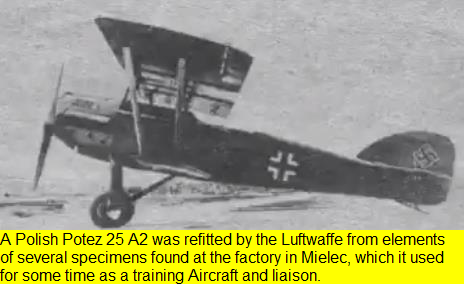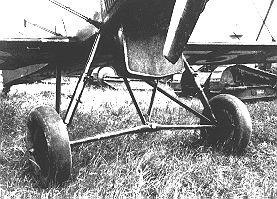In 1923, the Avions Henry Potez aircraft works started production of a successful Potez 15 reconnaissance biplane. Basing on experience gathered during the construction of that aircraft, Henry Potez started working on a new design of a heavier and faster multi-purpose aircraft. Designated Potez XXV or Potez 25, the prototype was built already in 1924. The main differences included a larger, more powerful engine and a new wing design. Instead of a classic biplane, Potez introduced a sesquiplane, with the lower wing significantly smaller. It was built in two main military variants: Potez 25A2 reconnaissance aircraft and Potez 25B2 bomber-reconnaissance aircraft.
In May 1925, the prototype was tested at the Service Technique d'Aeronautique Institute and was found a promising construction both for its manoeuvrability, speed and durability. Following the tests, the prototype entered serial production. To promote the new aircraft abroad, in a post-World War I market filled with hundreds of cheap demobilized aircraft, the Potez 25 was entered into a large number of races. Among the best-known achievements was a European rally (7,400 km/4,598 mi) and a Mediterranean rally (6,500 km/4,039 mi), both won by pilots flying the Potez. In 1920s, the Potez 25 was also used in a well-advertised Paris-Tehran rally (13,080 km/8,127 mi). In June 1930, Henri Guillaumet crashed with his Potez 25 in the Andes during an air mail flight. He survived after trekking through the mountains and was found after one week of searching.
Such achievements added to aircraft's popularity and made it one of the most successful French aircraft of the epoch. It was bought by a number of air forces, including those of France, Switzerland, Belgium, Brazil, Croatia, Estonia, Ethiopia, Finland, Greece, Spain, Japan, Yugoslavia, Paraguay, Poland, Portugal, Romania, Turkey and the USSR. After the USSR acquired two aircraft for testing, they decided against further purchases, finding it comparable to the native Polikarpov R-5. Altogether, approximately 2,500 aircraft were built in France.
Already in 1925, Poland bought a licence for Potez 25 and started to manufacture them in Podlaska Wytwórnia Samolotów (PWS, 150 built) and Plage i Laśkiewicz aircraft works (150 built). In 1928 the first Polish-built Potez 25 were tested by the Technical Aviation Development Institute in Warsaw and the design was slightly modified to better fit the needs of the Polish air forces. Among the notable differences were the introduction of leading edge slots. The production in Poland ceased in 1932. Altogether, 300 aircraft were built in a number of versions for long- and short-range reconnaissance and daylight tactical bombing. As the original Lorraine-Dietrich 12Eb engine was unavailable in Poland, it was replaced in 47 aircraft with a more powerful PZL Bristol Jupiter VIIF radial engine, starting from 1936.
In Romania, Potez 25 was produced by IAR. Several other countries manufactured Potez 25s under licence.
| Type |
2-seat reconnaissance aircraft |
| Engine |
1 Gnome-Rhône 9Ac with a 2-bladed wooden propeller |
| Dimensions |
Length 9,14 m , height 3,67 m , span 14,14 m , wing area 46,46 m2 , |
| Weights |
Empty 1370 kg, loaded 2150 kg , max. take off weight 2494 kg |
| Performance |
Max.. speed 230 km/h , cruising speed 170 km/h , range 760 km, endurance , service ceiling , climb |
| Armament |
1 machine-gun Vickers Fixed of 7.5mm In the fuselage firing forward, 2 twin-machine-guns Darne of 7.5mm in rear turret ,1machine-gun Lewis 7.7mm firing down through a hatch placed in the fuselage, 4 bombs of 50kg under the wings and 4 under the fuselage |
| Type |
Werk.Nr |
Registration |
History |
|
|
|
|

